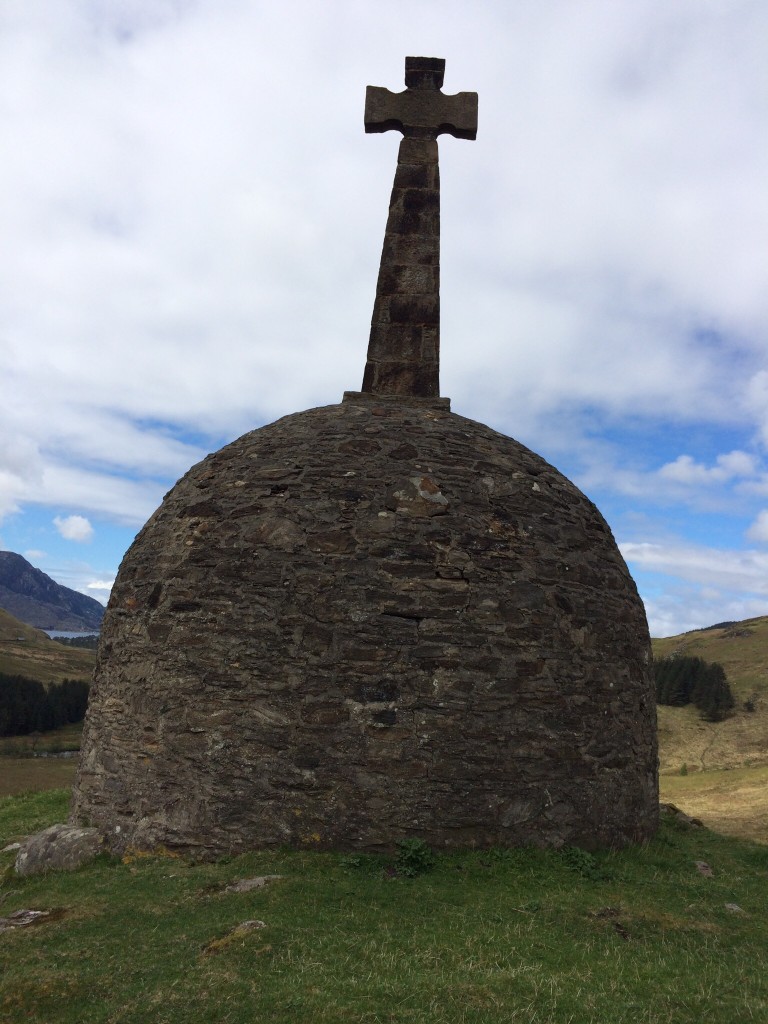It was raining when I woke up, which was several hours before I got up. I had breakfast, the cooked-in-the-pouch porridge and coffee, with extra made for the thermos (which just made the cut at send-back time).
But before breakfast: three aspirin.
I managed to eat without spilling, the bottom half of my body in the sleeping bag, and then dress and pack everything inside the tent. Everything but the tent, of course. By the time it was time to pack it, the rain had stopped.
There was a “bothy” at this spot. A bothy is an old building that has been repurposed as accommodation for hikers. It is usually an old stone homestead; sometimes it is a former “beya,” or place for animals.
Most bothies (I am told) have room for six or eight comfortably, but in bad weather hold 16 or 18. I have know idea how many people had stayed in this one. When I arrived at the camping area (which a man named Mark, who I walked the last hour with, described as “about the size of a baseball pitch”) I went by the bothy to take a look. One man was eating and another one was talking to him. Across the pitch 14 tents were pitched.
This was all at the head of a “sea loch,” which is to say a long bay in from the sound. The water was the ocean; sea weed was rafted up on the stony beach. Just before I disappeared into my tent the previous night a man had walked up from the mudflats and paused in front of me. I said good evening and he said something, I forget what.
In a wee bit of conversation it emerged that he was out with his son, who worked in one of the Gulf States and was here on his first Challenge. (Whose idea it was is a matter of dispute).
The man’s name was Alan Mitchell and his son was Colin. Alan was on his fifth crossing, but his wife, who was not in attendance, had done 10. And only one with Alan, which struck me as interesting. I’m sure I said something about being heavily laden.
He had a pleasant face and blue eyes–a surprising number of blue eyes here–and white hair and a short beard. An outdoorsman he looked (and he is). We said good night. As I was heading out in the morning–only three tents were still up–I passed by the bothy. He was standing in the door.
“You see you’re not the last,” he said.
I headed off up the glen (which is the name for a river valley) and soon enough they caught up with me. That was the beginning of a day and a half with Alan and Colin.












Recent Comments